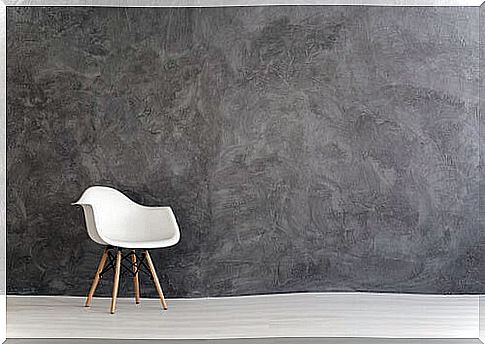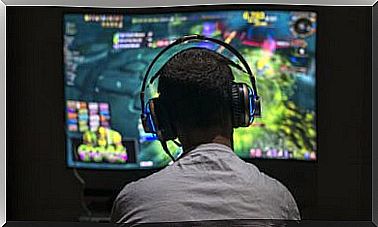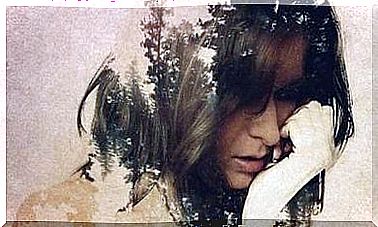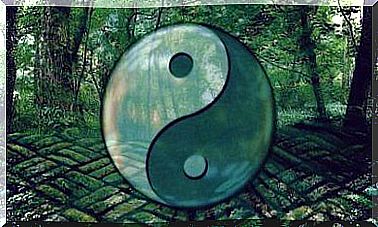The Empty Chair Technique

The empty chair technique is one of the most used work tools by Gestalt Theory. However, it is not exclusive to this current, it is also used by therapists from other branches of psychology. The popularization of its use is due to the fact that it has proven to be a very effective tool for addressing certain problems.
Thus, “the empty chair” is an emotional technique that can be a great resource to address unresolved issues from the past in consultation. Following the appropriate steps, marked by the therapist, the results can be very positive for personal development, and within this, for the emotional one. This is because it allows emotional contact with an absent situation or person. What is peculiar about this contact is that, in it, the patient remains in control at all times.
This technique was devised by Fritz Perls, neuropsychiatrist and psychoanalyst, creator of Gestalt Therapy. He used it when he gave short demonstration sessions to large audiences of professionals who wanted to learn about the Gestalt approach.
However, the creation of the empty chair technique is also coined to Jacob Levy Moreno, founder of Psychodrama. Current in which the use of this tool is quite frequent as well. In both currents the use of the technique is the same and has its indications.
What is the empty chair technique?
The empty chair technique turns a psychotherapy session into an experiential encounter for the patient. In addition to the two usual chairs used in the psychotherapy set, a third chair is added – the empty chair – in which the person is induced to imagine that someone or something is sitting there, and then address it as if it were really present. .
Initially, the person imaginatively projects on the empty chair a part of his personality, an absent person, a feeling or a certain situation with which he has a conflict to give way to a dialogue. Subsequently, the person, following the instructions of the therapist, will occupy the empty chair, thus changing roles. The dialogue is established through the change of roles in the chair.
That is, the person at first will go to what he is projecting on the chair, will speak to him and will say everything he needs as if he were really present in the session. Later, he will take the place of what is projected in his imagination and will give him the voice that will address him.

What aspects does the empty chair technique address?
The confrontation that occurs in the staging of the empty chair allows the person to confront conflicts, both current and past. The idea is to produce an important cathartic and transformative effect. It is usually used for the work of three different purposes.
A situation or event
They work with any event that has significantly marked the person and has altered their life in some way. It can represent a disturbing situation or a traumatic event. For example, a rape, accident, abuse, physical assault, or a childhood scene with your mother.
In this way, the person can give voice and a different understanding in the present to an event that occurred in the past. Where even though what happened cannot be changed, through contact with the emotions and thoughts of that moment the person will be able to express what they could not at that time and give a different meaning to the event.
The empty chair technique, by producing a screen effect -where the person locates their attention and projects the event-, can make the person come into contact with emotions and with the way in which they affect their life. It gives a different meaning to the way of feeling it, if it is in the past and if it is in the present, discover new ways of facing and responding to such a situation.
A person not available
The empty chair technique allows working with the evocation of a person with whom there is an unfinished business, but who is not available at the moment, either because he has died, disappeared, abandoned, separated or simply because any other circumstance prevents the meeting.
Using the imagination, the person evokes that significant figure -which no longer exists in physical reality, but does exist in his psychological reality- by sitting him in the empty chair. Once this is achieved, the person goes directly to the figure that occupies the chair, transmitting to him in the present all the emotions that he made him feel in the past and in the present. Remember that the goal is to achieve a cathartic effect.
An aspect of one’s own personality
The person projects aspects of their own personality, needs, disabilities, feelings, etc. onto the chair. In order to better manage and understand subjective – internal – aspects in a different reality, concrete reality. By projecting these aspects onto the empty chair, they become more tangible. Somehow it is as if they come to life.
When the person projects aspects of his own personality onto the empty chair, he allows himself to be looked at and examined from a distance, from the outside. In this way, she acquires the possibility of achieving a more impartial impression of herself. Sometimes, denying aspects of one’s own personality lies in the struggle between the person’s desire and moral restraint, which leads to non-acceptance of oneself.

Using the empty chair technique
The empty chair technique aims to be an instrument through which the person can enact a series of roles to project themselves and achieve cathartic effects. In this sense, you can project onto her those aspects of your personality not accepted as your own, an absent person, a feeling or a certain situation with which you have a conflict. All this in order to integrate them.
Although it is a useful tool and seems to be easy to apply, it should be used under the supervision of a therapist. The use of it is intermittent, it cannot be carried out in all sessions nor is it recommended for all people. Hence the importance that it is always applied by a therapist.









